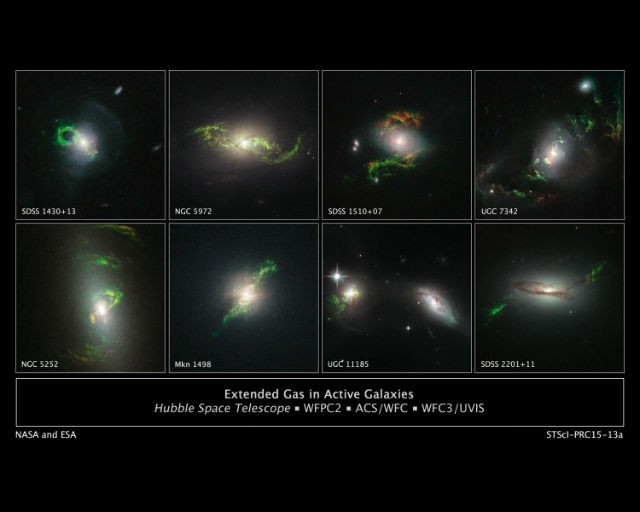The Milky Way Galaxy, which hosts millions of stars and its planetary systems - including our own sun and planet Earth, is set to merge with its nearest neighboring galaxy Andromeda four billions years from now, producing a celestial show of viridescent lights all over the night sky in the distant future.
In his recent blog entry on Scientific American, Lee Billings discussed the upcoming galactic collision between Milky Way and Andromeda, prompting two super-massive blackholes at their center to charge a large amount of oxygen atoms, a process known as a ionization, and emit luminous stream of green lights thousands of light years away from the newly-formed galaxy's center.
"The Milky Way harbors a supermassive black hole, just like our nearest neighboring island universe, the great spiral galaxy of Andromeda, and the two galaxies are set to collide in about four billion years. After the merger, the newly combined galaxies-Milkomeda-could be wreathed in their own ghostly, echoing glow. For a brief cosmic moment, a stargazer in that far future might see a memory of that epochal merger, a night sky swathed in green," Billing stated in his recent article.
Specter of green lights in the outer space is often rare and elusive. Aside from verdant aurora and comets emitting green lights as its carbon component gets baked by the Sun's ultraviolet rays, seeing viridescent lights isn't a usual thing in almost pitch black deep space.
However, a Dutch school-teacher in the name of Hanny van Arkel proved that there is another celestial activity that produces greenish lights. In 2007, van Arkel discovered galaxies that contain blobs of green lights after taking a keener observation at several photos from the Sloan Digital Sky Survey. Van Arkel, who is also a volunteer for citizen-science project citizen-science project, Galaxy Zoo, then began calling this new set of star-harboring bodies as Green Pea Galaxies.
Through the help of some of the world's most powerful telescopes, Spectroscopic observers had a chance to have a deeper look at these galaxies and found out the green lights are results of massive amount of oxygen getting ionized by ultraviolet radiations. Van Arkel's object or what's now known as Voorwerps are apparently the offsprings of violent clashing of two galaxies, each with supermasive blackholes at its center.
"Now, new data from the Hubble Space Telescope as well as from ground-based observatories suggest that those supermassive black holes, each with a mass of hundreds of millions of suns, are the likely power plants for the Voorwerpjes," according to Scientific American.com.
Bill Keel, an astronomer of the University of Alabama in Tuscaloosa, pointed out that the green stream of lights radiating 10,000 lightyears away from the center of these Green Peas galaxies are actually 'echoes of immense burps' coming from a galaxy that consumed another or Galactic cannibalism that happened eons of years ago, whem the universe was still young.
More details of Van arkel's breakthrough findings about Voonwerps and the role of binary blackholes upon it will be published in the upcoming edition of the Astronomical Journal.



























